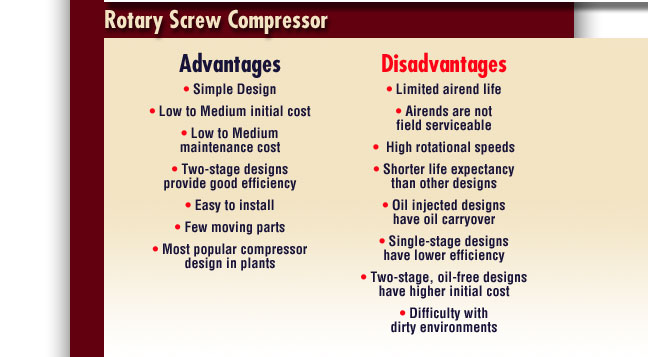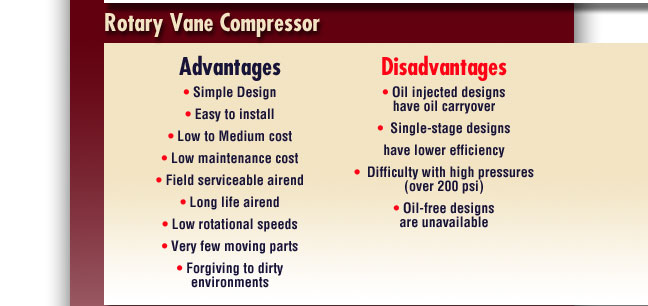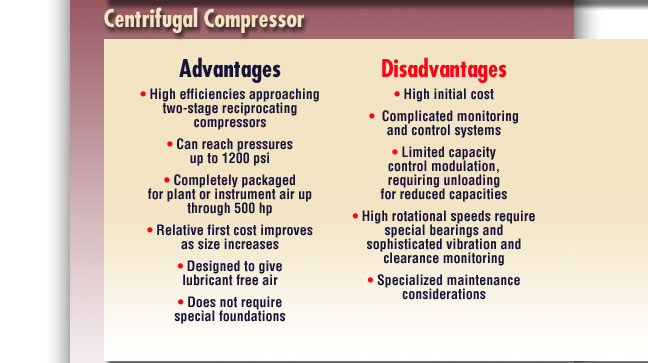
| |
|
|
|
|
||||||||
| |
|
|
|
|||||||||
| |
|
|
|
|
||||||||
|
||||||||||||
| |
|
|
|
|
|
|||||||
Air compressors have been used in industry for well over 100 years
because air as a resource is safe, flexible, clean and convenient.
These machines have evolved into highly reliable* pieces of equipment
that are almost indispensable in many of the applications they serve.
Compressors can come in a wide variety of different types and sizes.

Reciprocating or Piston compressors are the most common machines available on the market. They are positive displacement compressors and can be found in ranges from fractional to very high horsepowers. Positive displacement air compressors work by filling an air chamber with air and then reducing the chamber’s volume (Reciprocating, Rotary Screw and Rotary Sliding Vane are all positive displacement compressors). Reciprocating compressors work in a very similar manner as does as internal combustion engine but basically in a reverse process. They have cylinders, pistons, crankshafts, valves and housing blocks.
Rotary Screw Compressors work on the principle of air filling the void between two helical mated screws and their housing. As the two helical screws are turned, the volume is reduced resulting in an increase of air pressure. Most rotary screw compressors inject oil into the bearing and compression area. The reasons are for cooling, lubrication and creating a seal between screws and the housing wall to reduce internal leakage. After the compression cycle, the oil and air must be separated before the air can be used by the air system.
Rotary Sliding Vane Compressors like Reciprocating and Rotary Screw compressors are positive displacement compressors. The compressor pump consists primarily of a rotor, stator, and 8 blades. The slotted rotor is eccentrically arranged within the stator providing a crescent shaped swept area between the intake and exhaust ports. As the rotor turns a single revolution, compression is achieved as the volume goes from a maximum at the intake ports to a minimum at the exhaust port. The vanes are forced outward from within the rotor slots and held against the stator wall by rotational acceleration. Oil is injected into the air intake and along the stator walls to cool the air, lubricate the bearings and vanes, and provide a seal between the vanes and the stator wall. After the compression cycle, the oil and air must be separated before the air can be transferred to the air system.
Centrifugal Compressors are not positive displacement compressors like the Reciprocating, Screw or Vane Compressors. They use very high speed spinning impellers (up to 60,000 rpm) to accelerate the air then diffuser to decelerate the air. This process, called dynamic compression, uses velocity to cause an increase in pressure. In most Centrifugal compressors, there are several of these impeller/diffuser combinations. Typically, these machines have intercoolers between each stage to cool the air as well as remove 100% of the condensate to avoid impeller damage due to erosion.
| |
 |
 |
 |
 |
 |
